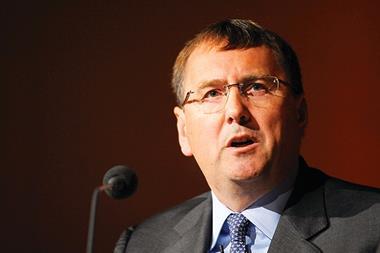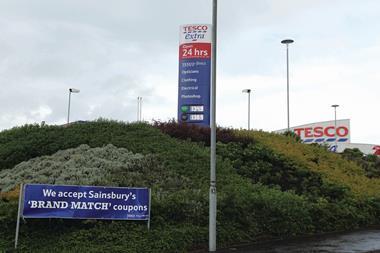Tesco’s profit warning in January was five years in the making and the recovery in its core UK business will take another half decade.
That was the view of one investment house prior to the grocer’s full-year results next week, when chief executive Philip Clarke is also expected to unveil the blueprint for its turnaround.
Since that update at the start of the year, Tesco has remained a cause for concern. Data in March showed the UK’s leading grocer accounted for 30.2% of its domestic market, down from 30.6% a year earlier, and its growth rate of 2.7% still lags the market. Investors are twitchy and there has been a slew of high-profile comments from some of its largest shareholders calling for decisive action.
In the past three months, Tesco has already promised to invest in 20,000 jobs in the UK to boost store performance, closed its second-hand car sales service, revamped its value food proposition and relaunched Tesco Direct. Clarke, meanwhile, has parted ways with his UK chief Richard Brasher, rolled up his sleeves and is taking a direct hand in identifying the company’s problems, formulating its recovery and seeing the plan through to completion.
Yet, none of this has quelled the disquiet surrounding the UK performance. And, key to Clarke re-establishing confidence from his investors will be his ability to shape out how Tesco intends to improve its customer proposition, reinvigorate its marketing (with or without the use of the Big Price Drop), improve the look and feel of its stores, and further leverage its already significant digital offering faster and further.
Overseas investments will also attract scrutiny as a drain on overall capital expenditure, with sights firmly fixed on the loss-making Fresh & Easy. A withdrawal from the US now, with the business seemingly only months from being profitable, seems unlikely. But, that it is back to the top of the agenda is indicative of the pressure on the retailer’s leaders to make a bold statement of intent come April 18.
The key strengths of Tesco’s business remain intact and it has the financial firepower to make significant investments - some estimates place the cost of fixing its UK woes at £1bn. Clarke’s problem is there is no clear, quick fix. Not only are considerable changes needed, but the ongoing pressure on consumers and the improving performance of Tesco’s key competitors will slow efforts to reclaim its crown as the UK’s most successful retailer.
The embattled chief executive must use next week to not only spark confidence in the future but also manage expectations about the pace of that recovery.


























No comments yet